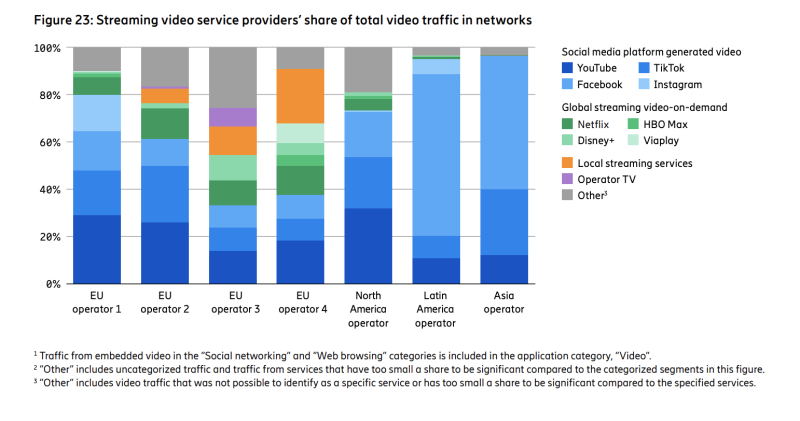Young people watching dance videos on TikTok seems innocuous enough. But video from social media platforms such as TikTok, Instagram and Facebook is driving mobile network traffic growth around the world.
In the latest edition of its biannual Mobility Report, Ericsson found that mobile network data traffic, in general, doubled in the last two years from 55 exabytes (EB) per month in Q3 2020 to 108 EB per month in Q3 2022.
Even on a sequential basis network data traffic grew 7% between Q2 2022 and Q3 2022.
Ericsson wrote, “Over the long term, traffic growth is driven by both the rising number of smartphone subscriptions and an increasing average data volume per subscription, fueled primarily by increased viewing of video content.”
The largest and fastest-growing mobile data traffic segment is video, from both social media outlets and video-on-demand services. Video constitutes around 70% of all global mobile network traffic in 2022 and is forecast to account for 80% by the end of 2028.
Ericsson took traffic measurements from a few selected commercial 4G and 5G networks in Europe, Asia and the Americas, to measure the breakdown of video traffic.
Figure 23 shows the share of video traffic per (un-named) service provider. The data shows that video streaming from the top four social media platforms makes up the largest part of video traffic in those networks: from 40%–95%. Those social media platforms are YouTube, Facebook, TikTok and Instagram.

Social media video streaming accounted for the vast majority of mobile traffic at the Asian and Latin American operators.
Meanwhile, global streaming video-on-demand traffic is only in the 10%–30% range. The operators in Europe and the U.S. saw some mobile data video traffic from the likes of Netflix, HBO Max and Disney+.